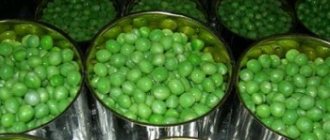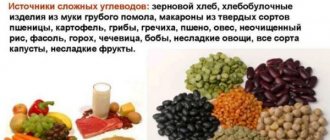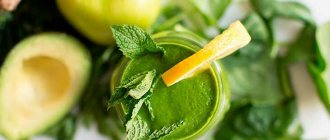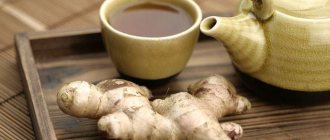Calorie content of green onions
Proper, balanced nutrition requires a certain consumption of KBJU (the ratio of calories, proteins, fats and carbohydrates that enter the body with food). Therefore, it is important to know how many calories are in fresh green onions, as well as its composition. Onion feathers have a low calorie content - 19 kcal per 100 g of green mass. The protein content in feathers is 1.3 g, carbohydrates - 3.2 g, fat - 0.1 g. These are very small indicators of the energy value of a food product, so it can be freely included in the menu for those who are watching their weight or adhering to certain diets
It is important to note that the calorie content of green onions of different types and varieties differs from each other. The tubular or flat, green stems of some varieties of perennial onions have a higher calorie content:
- shallots - 72 kcal;
- leek - 36 kcal;
- batun - 30 kcal.
All varieties of green onions are a low-calorie product (up to 80 kcal per 100 g). Eating greens, which contain a storehouse of nutrients, has a positive, healing effect on the human body. The presence of a rich set of natural microelements and vitamins in the product makes it indispensable in the diet.
Did you know? The calorie content of fresh green feathers is half that of onions.
The benefits of onions for weight loss
The green onion diet is considered generally accepted. The only drawback is the characteristic odor from the mouth after consuming the plant. However, the problem can be eliminated by heat treatment of the product. Boiled green onions have a pleasant taste. The main advantage of the diet is the absence of contraindications. Greens help you quickly lose weight and improve your overall health.
What are the benefits of green onions?
Nature has so harmoniously combined all the beneficial substances and compounds in green onions that they are almost completely absorbed by the human body, having a strengthening effect on it:
- vitamin A (retinol) - improves vision, condition of skin, nails, hair, accelerates fat metabolism and cell growth;
- vitamin C (ascorbic acid) - increases immunity, prevents diseases of the heart and circulatory system, slows down the aging of the body, reduces the likelihood of developing cancer, accelerates the healing process of wounds;
- vitamin PP (nicotinic acid) - promotes appetite and biochemical reactions in cells, increases the permeability of vascular walls;
- vitamin B1 (thiamine) - stimulates brain activity, maintains muscle tone, enriching them with oxygen, sucrose and other nutrients;
- phosphorus, calcium, magnesium, fluorine - are responsible for the strength of bones and tooth enamel, control blood sugar levels, improve the regeneration of soft tissues, and maintain potency in men;
- iron - participates in maintaining hemoglobin levels, prevents the destruction of dental tissue, supports the functioning of the brain and thyroid gland;
- zinc - normalizes the menstrual cycle and hormonal balance, has a beneficial effect on a woman’s reproductive functions, and prevents retinal detachment;
- phytoncides (volatile biologically active substances) - suppress the growth and development of bacteria, increase the body's resistance to toxins, relieve inflammation of the gums, the development of caries and stomatitis, fight colds, infectious and viral diseases, stabilize the general condition of the digestive system.
Due to the rich range of useful substances and the presence of positive qualities, greens are widely used for a healthy, balanced diet, in cosmetology and folk medicine, with various diets. Regular consumption of greens prevents the development of osteoporosis and other bone diseases;
improves digestion, supports the functioning of the cardiovascular system and blood microcirculation, helps to withstand stressful situations, and acts as an antiscorbutic agent. Onions are useful for diabetes - it regulates blood sugar and stimulates the production of insulin, and also in baby food - it increases immunity, saturates the body with vitamins, and serves as a prevention of colds. Did you know? One green onion contains 16% of the daily dose of vitamin K (phylloquine), necessary for the growth and development of healthy bone tissue in the body.
Growing juicy, fragrant feathers at home is not a tricky task, but it still requires a little effort and time, which not everyone can afford. You can buy finished products at any time of the year at the market or in a store. When purchasing greens, it is important to know the criteria by which a first-class, excellent quality product is determined.
Features of choosing quality greens when purchasing
Onion greens are sold fresh and frozen. Feathers lose a large amount of their positive taste and nutritional properties when exposed to low temperatures (freezing). Therefore, it is recommended to purchase them only in case of emergency. When purchasing a frozen product, give preference to onions with a rich green color, straight shoots that are not bent or broken. If the onion leaves are very dark and traces of damage and spoilage are visible, then you should refuse to purchase such a product.
High-quality green onions should be:
- intense dark green color;
- elastic, dense, not flaccid, with no dry pen tips;
- no stains, damage, or visible signs of deterioration;
- with a clearly defined demarcation line between the white and green parts of the plant (this feature indicates the juiciness of the vegetable);
- saturated with the specific aroma of this product;
- When packaging in containers, remain dry (condensation in the container is not acceptable).
Learn about the benefits and harms of green onions for human health.
Greens that have violations of these parameters will not be tasty, high quality or nutritious.
You should refrain from buying vegetables if the following signs are expressed:
- mucus on feathers - spoilage of the product, its long-term storage;
- plaque (of different types and colors) - excessive use of fertilizers and growth stimulants, as well as drugs to increase shelf life;
- dry tip of the pen - lack of moisture during cultivation - the onion will not be so juicy;
- sluggish, flabby, yellowed feathers - the presence of onion diseases;
- moisture in a container with herbs is the first symptoms of product spoilage;
- weakly expressed characteristic aroma of onions, or its absence - grown in greenhouses using large amounts of inorganic fertilizers;
- blurred border between the white and green parts of the feather - hardness, dryness of the vegetable;
- damage to leaves (bent, broken, cracked) - bacteria may accumulate in places of defect, shelf life is limited.
This culture has a characteristic feature: the darker and richer the color of the leaves, the sharper, more pungent their taste. To avoid spoilage of the product, it is recommended to wash the greens immediately before consuming them. Regular use of green onions in the diet is a powerful source of health. But the use of this vegetable in the daily diet must be approached wisely, paying attention to some of its aspects and features.
How to select and store green onions
When choosing a product, pay attention to several features:
- The onion should be strong and fresh;
- The leaves are green and dark;
- Feathers free of mucus or other coating;
- The bulb is white.
Green onions can be stored in the refrigerator for no more than 5 days. It is advisable to use glassware. Onions tolerate freezing well. Moreover, the beneficial properties are completely preserved. Some people prefer to ferment the product. These storage methods will allow you to always have healthy greens on the table. You can also grow onions yourself on a windowsill; all you need is a small container of soil and sunlight.
Rules and regulations for use
In order for the product to fully benefit the body, vitality and good spirits, it is advisable to adhere to the following instructions regarding it:
- use, if possible, only fresh (adding to salads, omelettes, soups, etc.);
- to improve absorption by the body, consume with vegetable oil;
- use up in a short time (green onions are a perishable product);
- To avoid bad breath, it is advised to eat a piece of rye bread, lemon, coffee grain, cardamom or a sprig of parsley.
Important! It is not advisable for pregnant women to exceed the daily intake of onion greens: excessive consumption of the product can lead to heartburn.
It should be noted that the largest amount of nutrients and vitamins is contained in the white part of the green onion (immediately when it comes out of the onion), there are slightly less of them in the feathers of the vegetable, and there are none at all on the tips of the onion shoots (tops). Therefore, when consuming the product, it is recommended to cut off the ends of the feathers by 3-4 cm, since they do not represent any value.
For those who are healthy and do not have allergic reactions to green onions, there are no restrictions on consuming the vegetable. Eating greens, within reasonable limits, is beneficial for everyone: from small to large. However, it is advisable to exercise moderation and some caution in this. If onion belching or heartburn occurs (signs of increased acidity of gastric juice), the amount of greens consumed must be reduced.
The daily intake of green onions is about 100 g. Focusing on the individual characteristics and reaction of the body, everyone can independently determine their need for this product. Having such a wide range of positive qualities and beneficial substances, green onions, unfortunately, have some restrictions on their use in the daily diet.
When and where did the onion appear?
Humanity has been familiar with onions for a very long time. Possessing unique properties, the vegetable became a favorite of people more than 5 thousand years ago. Scientists believe that onions are a cultivated plant obtained through selection. They came to this conclusion because they did not find a single species of wild onion. Afghanistan is considered to be the birthplace of ratenium.
Since ancient times, green onions, the caloric content of which we will consider further, have been famous for their amazing properties. Many warriors hung it on their chest before going into battle. They were convinced that this product could protect against wounds. It turns out that onions contain phytoncides that have a pronounced antimicrobial effect. Thus, in case of receiving open wounds, the bow could protect warriors from infection.
In Rus', onions gained wide popularity in the 12th century. It began to be actively used in the preparation of various dishes, as well as for treatment. Now the beneficial properties of this plant have been studied even more. At the same time, onions never cease to amaze with their effectiveness.
Harm and contraindications
The green product should be taken with caution (in minimal doses) if you have the following diseases:
- ulcerative inflammation of the gastrointestinal tract, duodenum, gastritis;
- kidney and liver diseases (hepatitis, cholecystitis, etc.);
- allergic reaction to onions;
- with hypertensive crises, persistently elevated blood pressure;
- exacerbation of chronic lung disease, bronchial asthma.
Important! When including green onions in your diet if you have acute chronic diseases, consult your doctor first.
Uncontrolled consumption of a vitamin product can lead to exacerbation of chronic diseases, so take greens in moderation, in small portions. The shelf life of the green product is short, so there is a need to take some unique measures to extend the shelf life of this vegetable. Let's take a closer look at the specifics of these events.
Benefits of green onions
Greens bring many benefits to the body due to their high content of vitamins and minerals. We suggest finding out the chemical composition of the plant:
- Vitamin A. After entering the body, the substance is converted into a visual pigment called rhodopsin, which is necessary for the normal functioning of the visual organs. People with vitamin A deficiency experience a variety of vision problems, sometimes causing damage to the cornea. To meet the body's needs for this essential vitamin, it is recommended to add green onions to your daily diet. 1 onion stalk contains about 3% of the daily requirement of this vitamin.
- Bactericidal substances. Green onions contain anthocyanin and quercetin. These compounds have a beneficial effect on the immune system because they help destroy pathogens.
- Vitamin C. An essential vitamin that slows down the aging of the body. The substance is an antioxidant and inhibits the formation of free radicals. Regular consumption of green onions stops the destruction of body cells.
- Vitamin K. 1 stalk of green onions contains approximately 16% of the daily value of phylloquinone. The substance promotes the normal development of bone tissue. It reduces the likelihood of developing diseases associated with the skeletal system, including osteoporosis.
- Zinc. This element improves the condition of the skin, hair and nail plates. Zinc is considered an essential substance for the normal functioning of the female reproductive system. During pregnancy, it is recommended to consume green onions to prevent malformations of the child’s nervous system.
Green onions improve appetite, so it is appropriate to add them to salads and other dishes.
Methods for storing green onions
Green onions keep all nutrients and vitamins fresh in full; When salted, they are lost to an insignificant extent; when frozen, a little more. In this regard, it is important to extend the life of the product with minimal damage to its beneficial qualities. There are several ways to store greens:
- Fresh. This option involves storing the green mass in the refrigerator or other cool place, such as a cellar. You should immediately take into account the fact that water greatly reduces the shelf life of green onions. Based on this, it is not recommended to pre-wash the vegetable, but only wipe it with a napkin to remove excess moisture from the feathers. Damaged and spoiled leaves must be removed. Prepared products are placed in plastic bags, food containers or glass jars with lids. The shelf life in this case is no more than 5 days. Greens with a bulb last longer - up to 10 days. Containers are selected according to the size of the vegetable. It is advisable to avoid feather creases to avoid rapid spoilage of the product.
- Freezing. When using this method, the onion is washed, dried and cut into pieces. By laying it in a layer on a flat surface (tray, dish, etc.), it is pre-frozen. The onions prepared in this way are placed in containers, bags and placed in the freezer for further storage. The shelf life of the frozen product is 1 year.
- Salting. Chopped (initially washed and dried) onions are placed in glass jars, sprinkled with salt at the rate of 200 g of salt per 1 kg of product. In this form it is stored for 6 months.
- Drying. Vegetable dryers and ovens are used for this process. In consistently warm, sunny weather, pre-prepared chopped vegetables are laid out to dry “in the sun.” The resulting dried material is packaged: in glass containers, linen bags or paper bags. Dried onions can be stored for up to 2 years.
When thermally processing greens, the lion's share of beneficial properties is lost, for example: the loss of vitamin C (ascorbic acid) is 75%. In view of this, storage by preservation is not recommended and is rarely used. Green onions, having such a wide range of positive qualities, undoubtedly occupy an honorable place in the human diet. Taking into account its features, adhering to the recommendations for choosing and storing vegetables, you will certainly receive benefits and pleasure from consuming this product at any time of the year.
Preparing onions for the winter
To always have a supply of green onions, it is recommended to freeze them. Before placing in the freezer, the product is prepared in a special way. The greens are cleaned of dirt, washed and dried on a clean towel. Then they are cut into small plates and placed in a plastic container. In addition, there are recipes for pickled onions. To do this, the plant is finely chopped, placed in several layers in a wide bowl and sprinkled with salt. Place a flat plate on top and place a weight to weigh it down. After 2 days the brine appears. After 3 weeks, pickled onions are considered ready.











